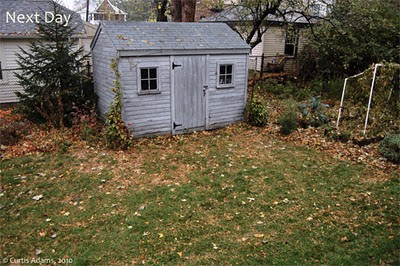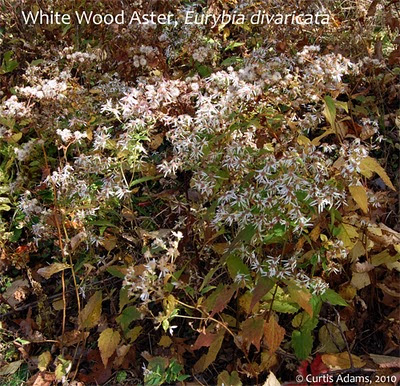One of the most common trees in the residential setting is the Norway Maple, Acer platanoides. It was first introduced into the United State in 1756 by John Bartram. It is well adapted to the climate in the Northeast and grows well under a wide range of growing conditions, making it a preferred tree in urban and suburban landscapes. It’s tolerance of for almost any environmental condition, ability to grow in the shade, prolific seed production and overuse in the landscape has led to this becoming a dangerously invasive species in the Northeastern US.
Working in residential landscapes I often encounter the difficulty of working around this species. Its dense shade and greedy roots that suck moisture out of soil make it difficult to underplant. While many consider the Norway Maple as allelopathic (producing compounds that retard the growth of other plants), there are studies that indicate that this is not the case. (One study found no experimentally measurable allelopathic effects from Norway Maple.) I think the problems encountered under a Norway maple are mainly due to the shade it casts and the dense network of roots that scavenge moisture and nutrients from the soil.
 |
| Norway Maple stump 6 years after a native species restoration at Mount Auburn Cemetery |
This photo shows the best method for dealing with a Norway Maple. Despite my disdain for this tree, I have not taken that step on my own property, yet. Since there is not another tree in the area to provide shade around the house for the hot afternoon sun I am hesitant to open up the canopy that much. Instead I have been exploring which native plants will grow under its canopy.
To get some ideas, I tried to learn about what grows the natural forest community along with Norway Maple in its native range (Europe and Asia). I thought I could find native equivalents to those European species. This tree is naturally found in mesic deciduous forests and mature riparian communities. While I did not find a definitive description of the other plants in this community (I’m sure that information is out there) I did get some clues from a site on the Plant Formations in the Central European BioProvince. One shocking conclusion jumped out.
Many of the perennials and shrubs that grow in forests along with the Norway Maple are also invasive, or have tendencies toward invasiveness, in North American forests. These include goutweed (Aegopodium podagraria), fig buttercup (Ficaria verna), Tartan honeysuckle (Lonicera tartarica also L. xylosteum), yellow archangel (Lamium galeobdolon), and lily-of the valley (Convallaria majalis). So I would be hesitant to recommend any new non-native species with the possibility of making a bad situation worse. However there were some others that are better behaved such as sweet woodruff (Galium odoratum), European ginger (Asarum europaeum), Siberian squill (Scilla sibrica), Tartan dogwood (Cornus alba) and fumewort (Corydalis solida) and some really neat plants like common hazel, Corylus avellana (from which comes ‘Harry Lauder’s Walking Stick’ ).
In my own testing, I have been selecting native plant species that are tolerant of dry shade. So far I have found a number of natives that survive but do not flourish. It seems to be a general trend that all plants grow smaller and slower in that environment. However, there are a few that are more than holding there own. My plant list is as follows:
 |
| Smooth Aster and Showy Goldenrod, both about 1/2 size of those in other parts of the garden |
American Bellflower (Campanulastrum americanum), American Pennyroyal (Hedeoma pulegioides), Smooth Aster (Symphyotrichum laeve), Heartleaf Aster (Symphyotrichum cordifolium), Virginia Creeper (Parthenocissus quinquefolia), Wafer Ash (Ptelea trifoliata) , Wild Bleeding Heart (Dicentra eximia), Witchhazel (Hamamelis virginiana ).
Holding their own:
 |
| Male Fern, still green after a couple of frosts. |
 Male Fern (Dryopteris filix-mas), Christmas Fern (Polystichum acrostichoides), Rosey sedge (Carex rosea), Alumroot (Heuchera villosa), Barren Strawberry (Waldsteinia fragariodes), Hairy solomon’s seal (Polygonatum pubescens), Largeflower bellwort (Uvularia grandiflora), Rosinweed (Silphium integrifolium), Showy Goldenrod (Solidago speciosa), Twinleaf (Jeffersonia diphylla), and Possumhaw Viburnum (Viburnum nudum). This particular Viburnum was selected to improve pollination of the 'Winterthur' Viburnums nearby.
Male Fern (Dryopteris filix-mas), Christmas Fern (Polystichum acrostichoides), Rosey sedge (Carex rosea), Alumroot (Heuchera villosa), Barren Strawberry (Waldsteinia fragariodes), Hairy solomon’s seal (Polygonatum pubescens), Largeflower bellwort (Uvularia grandiflora), Rosinweed (Silphium integrifolium), Showy Goldenrod (Solidago speciosa), Twinleaf (Jeffersonia diphylla), and Possumhaw Viburnum (Viburnum nudum). This particular Viburnum was selected to improve pollination of the 'Winterthur' Viburnums nearby.Promising, but still early:
Allegheny vine (Adlumia fungosa), Black Huckleberry (Gaylussacia baccata), Black-eyed Susan (Rudbeckia hirta), Inland Sea Oats (Chasmanthium latifolium), Lowbush Blueberry (Vaccinium angustifolia), and Pennsylvania sedge (Carex pensylvanica).
Failures, faded away or died outright:
Canada Mayflower (Maianthemum canadense), Fetterbush (Leucothoe fontanesiana), Foamflower (Tiarella cordifolia), Green and Gold (Chrysogonum virginianum), and Squirrel Corn (Dicentra canadensis). (When I moved the Leucothoe to a different shady location, without the root competition, it perked up after a couple of weeks.)
Plants that should work, planned for next season:
Labrador violet (Viola labradorica) and Maple-leaf viburnum (Viburnum acerifolium),
I’d like to hear what other natives have worked for you under Norway Maples, or ones that have failed desperately.



















































